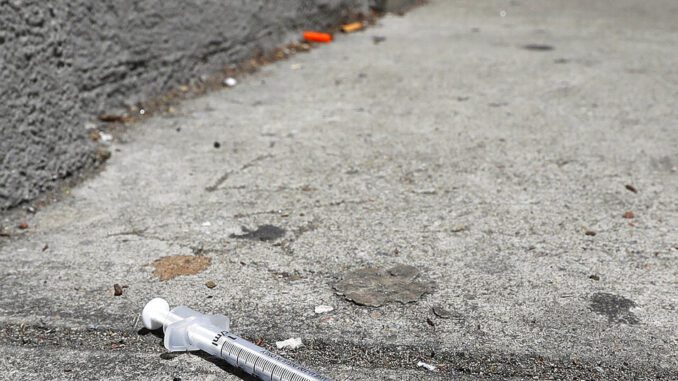
In recent weeks, I’ve noted how, as COVID-19 mask mandates fall by the wayside, the nation has been moving away from what now seems excessive risk aversion. And I’ve described the National Bureau of Economic Research paper assessing how the costs of the lockdowns have exceeded the benefits.
As one might expect, the damage has not been geographically even. COVID-19 restrictions have been most stringent in the largest metropolitan areas because the dangers of contagion seemed to be the greatest in areas where people are so densely packed. And it is also because these areas tend to be in states with Democratic governors, and Democrats have been more risk-averse than Republicans.
Evidence of this comes from the Census Bureau’s estimates of the population on July 1, 2021, as compared to the results of the regular decennial Census conducted on April 1, 2020. The data shows the smallest percentage of a population increase in American history, just 0.13%.
An unprecedented 18 of the 50 states and the District of Columbia all lost population. The biggest percentages of population losses were in Washington, D.C. (-2.8%), New York (-1.8%), Illinois (-1.1%), and California (-0.8%) — all densely populated, all politically woke.
The 2021 population estimates for counties and metropolitan areas provide an additional focus. A map of counties showing population gains or losses shows hundreds of small counties losing population — as many have for decades.
But the biggest losses, in both population and percentage loss, came in four of the nation’s six largest metropolitan areas: San Francisco/San Jose (-2.6%), New York (-1.8%), Chicago (-1.1%) and Los Angeles/Riverside (-0.8%). Each of the first three, in just 15 months from April 2020 to July 2021, lost a population that equaled 20% of their total population gain in the 20 years between 2000 and 2020. The figure for Los Angeles/Riverside was lower at 7%, but that remains stunning.
Taken together, these four metropolitan areas lost 805,000 people (numbers are rounded off for clarity), while the rest of the nation gained 1,239,000.
These are alarming numbers in four metropolitan areas that, even after these population losses, continue to be home to 1 in 6 (16%) people in the United States. At least temporarily, they lost affluent professionals who could make money Zooming from their summer places.
But it’s also noteworthy, and probably more permanent, that people with modest educations and incomes have fled far beyond the exurbs. That’s not true everywhere: The central city counties of the No. 4 and No. 5 metropolitan areas, Dallas and Houston, lost population, but that was more than offset by gains in the counties beyond. Metropolitan Dallas’ population was up 4.9% in 2020-21, and metropolitan Houston’s was up 3.5%.
As the demographic expert Joel Kotkin has argued, even before COVID-19, the nation’s population growth and its economic dynamism had been concentrated disproportionately in the exurbs, which typically have reasonable tax rates and development-friendly regulations.
Exurban growth tapered off in the immediate aftermath of the 2008 financial collapse, which was triggered by the overstimulation of exurban housing, especially among Hispanic residents. But, as Kotkin noted, growth quickly resumed in the exurbs and in parts of the Rocky Mountains and the North Woods. Where it’s missing is in the outlying exurbs in high-tax New York, New Jersey and California.
Many optimistically predict a comeback in central cities as lockdowns and masking are, however reluctantly, phased out. Even so, the sharp 2020-21 decline in the population of Manhattan, heavily gentrified Washington and the hip neighborhoods in Brooklyn and Queens suggests this could be an uphill struggle.
The young people who jammed into hip, edgy neighborhoods in these areas may not find their way back. And while they may change the tone of the more conventional places where they land, they also may end up living more conventionally than if they had stayed planted in their comfortable hothouses.
Their apparent disappearance is more evidence of the self-harm that liberal and progressive politicians have inflicted on their core constituencies during the COVID-19 era. Progressive teacher unions managed to keep schools in progressive areas closed for two years, with mask mandates remaining in force, so many parents sought alternatives. Public school enrollment is down, while Catholic school enrollment is up and homeschooling and demand for charter schools are rising.
Meanwhile, violent crime rates have skyrocketed since the George Floyd riots of June 2020, and there are signs that voters even in New York, Chicago, Los Angeles and San Francisco are recoiling. These four big metropolitan areas went for President Joe Biden by nearly 8 million voters, while former President Donald Trump carried the other five-sixths of the country by just under 1 million. Eighteen months later, it looks like that balance is changing.
Michael Barone is a senior political analyst for the Washington Examiner, resident fellow at the American Enterprise Institute and longtime co-author of The Almanac of American Politics.
